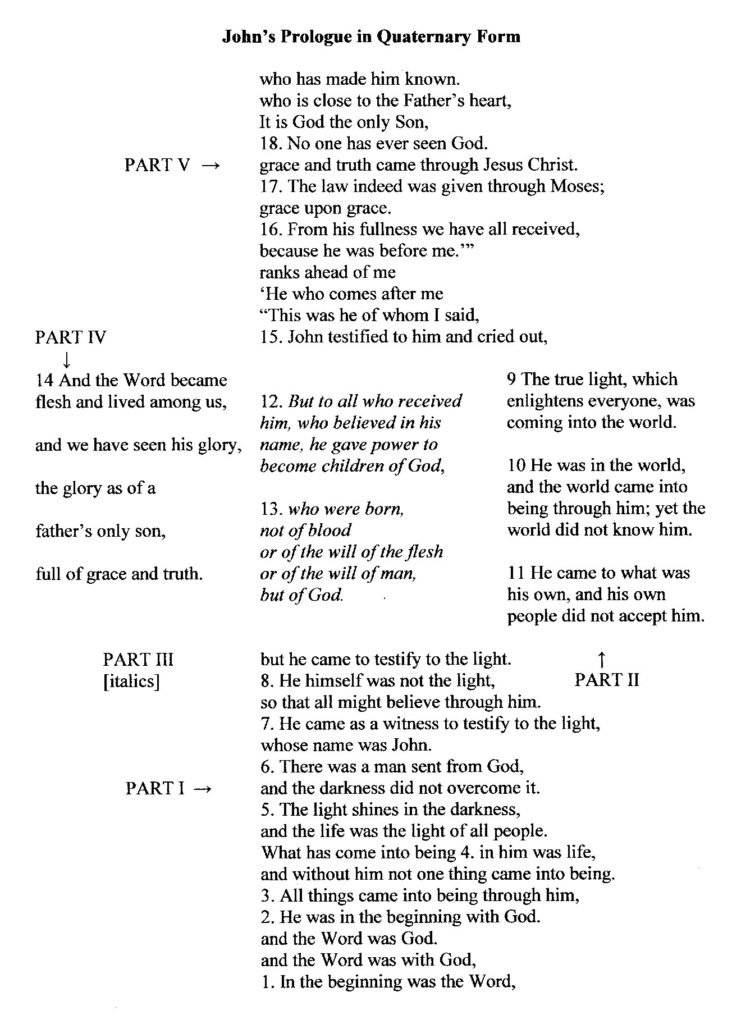
We have mentioned the chiastic form which has been discovered in John’s prologue.There has been increasing agreement that the center of this chiastic form is in v. 12 or 12+13. Gerhard and Ellis find in the prologue the same five-part chiastic structure which they have found throughout the gospel. We shall use their proposed structure for the prologue. Here we have supplied provisional titles to make evident, from the beginning, some of the symmetry and thematic development.
I. (a) 1:1-8. The Word before creation; creation; light of Word in the world.
II. (b) 1:9-11. Light of the Word coming into the world in Jesus, and unrecognized by the world or by “his own,” the Jewish people.
III. (c) 1:12-13. All who believe in him are enabled to become children of God.
IV. (b’) 1:14. The Word becomes flesh, dwelling among those who believe in him. These see his glory.
V. (a’) 1:15-18. Those who believe in him receive his fullness of grace and truth; they know God by dwelling in God as does he, the Son. This is the new creation.
Some of the chiastic parallels are easily seen. There are two matching sections concerning John the Baptist (vv. 6-8 and v. 15). The prologue begins with the Word which is with God (1:1), and concludes with the Son who is in the bosom of the Father (1:18). All things were created through him (the Word) (1:3) and grace and truth came through Jesus Christ (1:17).
Less obvious is the antithetic parallel of the “world” (1:10) which did not know him although he was in it, with the “we” (1:14) who have seen his glory as he dwelt among us.
In the prologue figure,there is a return to the clarity and simplicity of the Pauline figure, but with the unique theological richness and depth of John’s vision. The center of this figure correlates very well with the baptismal symbolism of the sea-crossing, and thus also with Jesus upon the cross. The cosmic scope of the Pauline figure is maintained, but deepened with the thematic of new and immanent creation. The contrast between Jew and Gentile has given way to the contrast between “we”who have seen his glory and believed in him, so that he dwells among us as in the new Israel, first fruits of the new creation, and the “world”which did not know him when he appeared within it, and so remains merely “world,” the untransformed old creation. The divine unitive fullness which is implicit in the mandalic structure of these figures becomes explicit in the language itself of the prologue (1:14-16).
We shall return to this prologue figure to develop it further, after our detailed study of the gospel. From the prologue’s perspective of final synthesis, we shall then be able to review the narrative as a whole.
Source:
Bruno Barnhart, The Good Wine: Reading John from the Center, pp. 48-51.
HyC